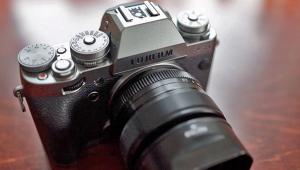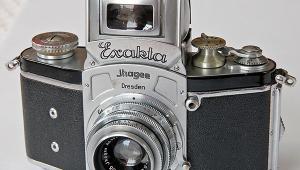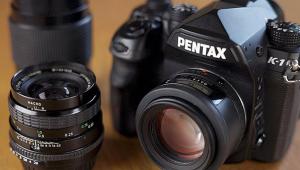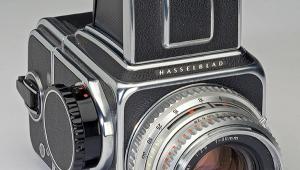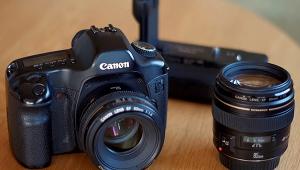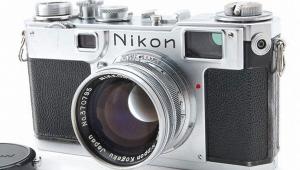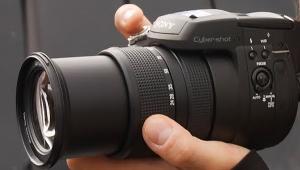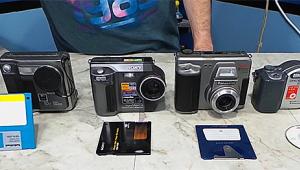Voigtlander’s Bessa R3M And 50mm f/2 Heliar Classic Lens; A Retro Classic
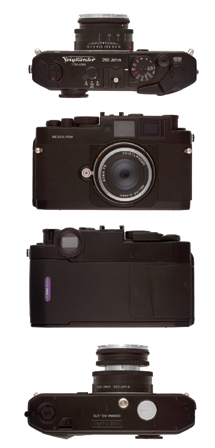 Pick up the new Bessa R3M (or R2M--only the viewfinders differ) and it takes you back in time. At a solid 430 gm (a fraction over 15 oz) it has the heft and overall feel of a high-quality camera from the 1950s or '60s. Appropriately, it is the best Bessa yet, produced to commemorate the 250th anniversary of the founding of Voigtländer, and is engraved "250 Jahre" (Jahre = Years) and "1756-2006."
Pick up the new Bessa R3M (or R2M--only the viewfinders differ) and it takes you back in time. At a solid 430 gm (a fraction over 15 oz) it has the heft and overall feel of a high-quality camera from the 1950s or '60s. Appropriately, it is the best Bessa yet, produced to commemorate the 250th anniversary of the founding of Voigtländer, and is engraved "250 Jahre" (Jahre = Years) and "1756-2006."
Even so, it is obviously related to its predecessors, the R2A/R3A, R2, T, R, and L--and, off to one side, R2C and R2S. In other words, it is a coupled rangefinder camera (as are they all, except the L). It shares a four-claw Leica M-compatible mount with the T, R2, R2A, and R3A. Screwmount Leica-fit lenses (39mm x 26 tpi) can be used via simple adapters. Because frames are manually selected, not automatically as with a Leica M or Zeiss Ikon, any screw-to-bayonet adapter is suitable; it need not be matched to the focal length. Of the other Bessas, the original L and R were Leica screw-compatible only; R2C and R2S, Contax, and Nikon S mount respectively.
The sensitivity of the through-lens metering is from EV 1-19 (ISO 100). The vertical-run metal-blade shutter (1 second to 1/2000 sec plus B, sync at 1/125 sec) seems the quietest of any Bessa to date, though this is subjective as we have no way of measuring it. Nor does it seem quite as quiet as our (well-used) Leica MP. The camera supplied came in "piano black," a smoother, more traditional black paint than the slightly nubby black found on most other Voigtländers except the front plate of the R3S NHS. Like most Bessas, the R3M/R2M takes an auxiliary trigger base.
All the traditional features are there, such as an accessory shoe with flash contact, a separate PC flash nipple (left-hand end), a proper cable release socket in the release button, and a standard 1/4" tripod socket. If you handed it to a photographer of the late '50s, the only things he would find remarkable (and very welcome) are the through-lens metering and the film reminder window in the back.
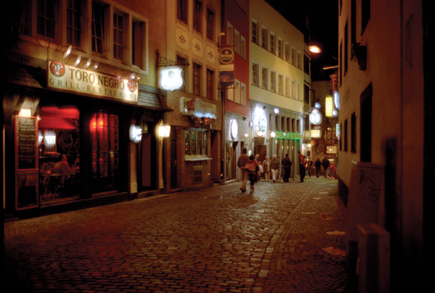 |
|
|
Parallax-corrected bright-lines are manually selected for three sets of lenses: 40/90, 50, and 75 for the R3, or 35/90, 50, and 75 for the R2: the 1:1 viewfinder of the R3M means that 40mm is the widest that can be fitted in, but the 0.7x of the R2M allows 35mm as well. The rangefinder couples down to less than 0.7m (under 28"), with frame-line parallax compensation.
The biggest difference between the R3M/R2M and R3A/R2A is that the newer cameras have mechanical shutters (M) without any autoexposure option (A). This also means that if the batteries die (two LR44 or SR44), the cameras remain usable. Battery dependency worries some photographers more than others, and neither camp can see what the other camp worries about.
Apart from this, there is also a different and superior metering system. Half-depress the shutter release, and it comes on for about 11 seconds. It's red LEDs, as usual, and a central red 0 indicates the recommended exposure. Then, each side of this, there are half-stop gradations: 1/2, 1, 11/2, and 2.
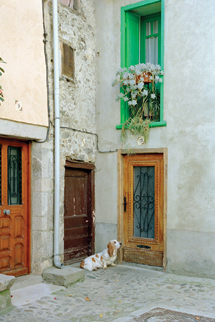 |
|
|
These enable a quick, easy check of the brightness range of the scene in front of you. It might be taken as the best through-lens metering system ever to have appeared in any rangefinder camera, but it does have two drawbacks, one a design feature and the other a very small defect with this particular camera which we would expect to be fixed under guarantee: it wasn't worth our while to send it back.
The design feature is that at all but the 0 reading, the LEDs flash instead of being lit steadily. This rapidly grates on the nerves of anyone accustomed to a flashing red light being an urgent warning, and also makes the numbers harder to see. The defect was that the "0" LED always remained lit at half intensity, no matter what else lit or didn't.
Our '50s photographer might also be impressed at one or two other details, such as the clever double-folding rewind crank (rewind knobs were still de rigeur in the '50s) and the interlock on the back lock: a lever concentric with the rewind knob must be pushed back before the knob can be pulled up to open the back. Then again, he'd probably be puzzled by the absence of a separate back lock.
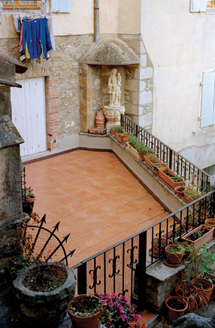 |
|
|
He might also be intrigued by the way that the lift-twist-and-drop film speed scale went from 25 to 3200 (with 1/3 stop rests). OK, a top film speed of 1000, maybe, but 3200 would be sheer fantasy and in any case, how would he expose his Kodachrome (ASA 10)? And why would the speed dial be marked "ISO" instead of "ASA"?
It may seem odd to judge this camera in '50s terms, but it is the only easy way to emphasize how very classical it is in both design and execution. It also reminds us how much better off we are today!
The 50mm f/2 Heliar Classic
Once again, the '50s quality feel of this Leica M mount-compatible lens is remarkable. Pull the front out; twist 1/3 turn to the right; and the lens is ready for use. Reverse the process, and it retracts into the mount, saving a bit of space.
Elegant and classical though this may be, it is perhaps just a little too retro. It does not actually collapse very much, just 8mm (1/3") or so. Even in the collapsed position it therefore protrudes almost 30mm, close to 11/4". Compare this with the rigid 50mm f/2.5 Color Skopar, 2/3 stop slower it is true, but protruding only 27mm with the shade off or 32.5mm with the admittedly vestigial shade in place.
 |
|
|
Ah, yes, the shade. The all-metal tubular shade of the Heliar Classic is a healthy 21mm (4/5") deep, with the same sort of three-claw exterior bayonet mount as the new Zeiss Ikon lenses. Unfortunately, it's non-reversible: if it were, it would be very elegant indeed. Also, unlike other Voigtländer lenses, the 39mm lens cap doesn't go over the shade, but into the front of the lens with a pinch-clip fit that slips all too readily out of the fingertips. The 39mm filter size is commendably shared with the 21mm f/4, 25mm f/4, 28mm f/3.5, 35mm f/2.5, 35mm f/1.7, 50mm f/2.5, and 90mm f/3.5.
